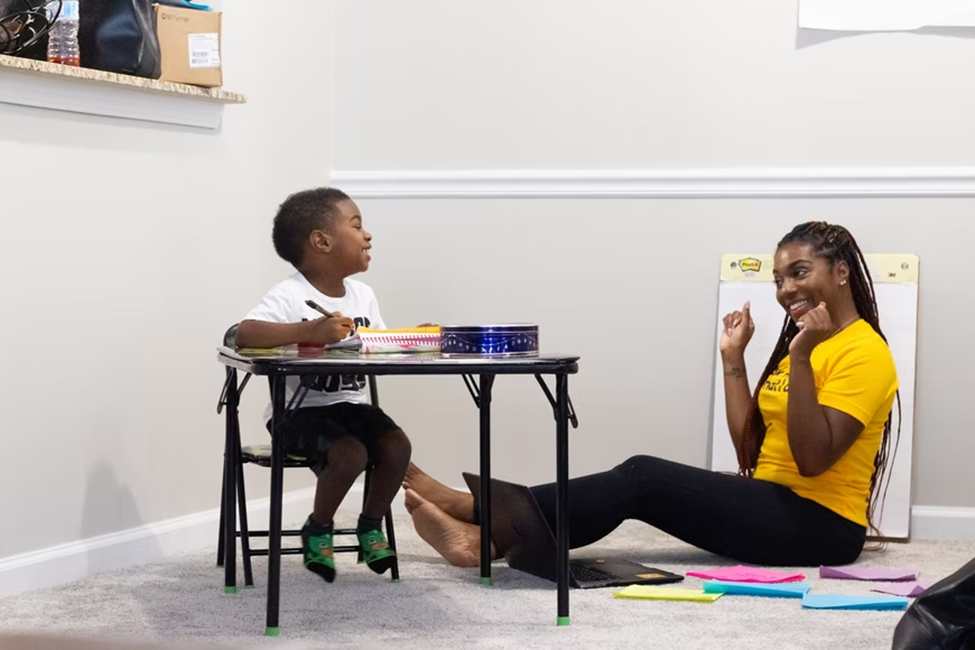While many of us will have grown up with a lot of different teaching styles, both at school and depicted on television, it’s one thing to see other people teach, and another thing entirely to understand what tools they’re employing day-to-day. And we don’t just mean software tools like Teams’ phone system, but also soft skills like directive language.
Teaching is hard work. It’s often not as well-paid as it should be, the hours are long, often extending beyond the time spent physically at the school, and it requires a lot of emotional resilience – especially with drastic shifts toward remote learning shaking things up in recent years. As well as catering to a host of different needs, attitudes, aptitudes, and personalities in your students, you also have to interact with their parents and guardians, fellow colleagues, and other stakeholders.
For a lot of people, teaching is not so much a job as a calling – and a very rewarding one at that, under the right circumstances. To ease the pressure of classroom interaction, here are some of our handiest tools for positive communication in the classroom. And the best part is that you can use them inside and outside the classroom, with adults and children alike.
Look after your own mental health
You can’t pour from an empty cup, as the saying goes. If you’ve just finished teaching your students how to use a PandaDoc thesis proposal template and you have 5 minutes before your next class starts, you should take a break.
The first thing you should do before starting your next class is making sure that you’re okay, because if you’re not okay, how are you meant to help a gaggle of kids learn anything today? Just as you might use DuoCircle to protect your email from scams and attacks, you can use techniques to protect yourself from stress and burnout.
Check in with yourself regularly, take a moment to breathe, and mentally reset before entering a classroom so that you can bring your best self to your students. Here are some quick tips for looking after your mental wellbeing:
Controlled breathing
There are numerous controlled breathing exercises, from box breathing to Buteyko breathing, that can help keep your nervous system in check and keep you calm during even the most taxing interactions.
Journaling
Journaling is a great way to express yourself and to untangle the emotions and thoughts you might be stuck on, leaving your mind clearer for the next day. Doing this at the end of your day can help to leave you feeling fresh and ready for another day at school.
Mindfulness
It might sound a little corny, but mindfulness is great for grounding you whenever you start to feel stressed or overwhelmed. The 5-4-3-2-1 method is great for bringing you into the here and now. In your head, find 5 things you can see, then 4 things you can feel, 3 things you can hear, 2 things you can smell, and 1 thing you can taste.
Establish a safe, supportive environment
From the get-go, you want to establish your classroom and your presence as one of safety and support. You want kids to feel comfortable around you and nurtured. We’ve come a long way as a society from the days of fear and intimidation as motivators for good behavior. We want the exact opposite.
By building a sense of trust in your classroom, you will be able to get the best out of your students, both during genius hour and the rest of the week, and you will also enjoy your days a lot more as well. If you work with teenagers, it might be harder for them to open up because of all that being a teenager entails, which only makes this part even more vital. Some tips for establishing a safe environment:
The circle of trust
Physically placing the tables and chairs of your classroom in a circle, with your desk and chair as part of the circle, creates a more democratic feeling, with your role more as mediator or facilitator to learning and the kids as equal and empowered participants. This simple change, if you have the space for it, is surprisingly effective at fostering engagement.
There won’t be anyone falling asleep at the back of class, or anyone’s lifted arm being quietly obscured by the person in front.
Active listening
As a teacher, you might expect to have to do a lot of talking, but the trick is to get your students to talk, whether it’s about an IP telephony system in your IT class or Emily Bronte’s use of poetic metaphor in English. People learn more by engaging in a subject rather than passively listening to the teacher and zoning out. So instead, make it your job to listen to your students.
People are a lot more likely to talk if they feel heard. So hone the art of active listening and showing genuine interest in what your students have to say if you want to encourage them to become entrepreneurial adults, and encourage the students to do the same for each other by rewarding positive behaviors.

It’s also vital to be aware of non-verbal communication to gauge how your students are feeling and responding to the class. This will inform which direction to lead the class toward.
Give everyone time to express themselves
As well as listening, make sure that everyone gets a chance to express themselves, even if it’s not always orally. People express themselves through writing, through body language, and through music and art, to name a few examples.
Being able to express yourself is basically being allowed to be yourself, and students who feel they can be themselves are going to enjoy school a lot more. So if Jamal really wants to talk at length about up and coming machine learning capabilities, or Janice gets really excited about geological formations, give them a chance to express those interests.
Be aware of different cultural communication practices
The class you teach might have students from a vast array of cultures, and it would be wise to take some time to learn more about those cultures in order to better understand your students. People from some cultures are more talkative than others, use more hand gestures, and even have wildly different facial expressions.
Don’t assume that the dominant culture’s way of expressing things is the norm for every culture. You might think a child is daydreaming or disengaged when they in fact come from a culture that is more quietly observant than others. Or you might think some students are too loud when they actually are just more expressive. To create harmony in your class, try to be accepting of different communication practices.
Lead by example & do your homework
Now that we’ve covered the two crucial areas of mental health and trust, let’s delve into your more active role in communicating with the class.
Know your subject inside out
It should go without saying that if you are unsure about your subject, your class will also struggle to learn. While you probably received extensive training and education in the subject you teach, taking regular refreshers and brushing up on subjects you may have forgotten the ins and outs of will keep you on top of your game.
The more you understand your subject, the better you’ll be able to teach it, and the more confident, relaxed, and self-assured you will feel.
Be clear and concise
Clarity and brevity are an artform when it comes to communication. We’re often taught to think that more is more, but it’s much harder (and much more useful) to make your points clearly and concisely. This will help your students to focus and not get distracted, as well as offering them real, applicable answers to their questions.
Use directive language
Rather than pleading or begging your students to pay attention, do their homework, or be quiet, you should direct them instead. Instead of “Andy would you please, for my sake, and for the sake of the class, stop talking about your cloud hosted PBX and pay attention to the lesson?!”, say something along the lines of “Everyone focus on the board. A few students need to be at their desks and facing the front.”
The key is to avoid confrontation or escalating any situation while giving clear, neutral instructions to guide your students. Using scripted responses might seem cold and aloof but will offer you a blueprint for different situations that arise. Also make sure to avoid using your needs as a motivating factor for good behavior.
People respond a lot better to the carrot than to any stick, including teachers. Chasing people and using negative language is taxing for everyone, the teachers too. It only leads to stress and burnout. So to use positive language, try to:
- Acknowledge good behavior like working well as a team, paying attention in class, and giving homework in on time.
- Use non-verbal communication like smiling or giving kids a thumbs up to build their self-esteem.
- Acknowledge your students’ improvements and the effort they put into the class, regardless of final grades.
- Regularly offer constructive feedback which offers insights into your students strengths and weaknesses, with concrete steps to follow for improvement.
- Try to link your students’ interests outside of class with the classwork for extra motivation.
To sum up…
For good communication in the classroom, you first need to check that your own mental health is looked after – you can’t pour from an empty cup. Then, you need to actively foster a supportive and safe environment for your classes from the get-go to encourage motivated and engaged discussions between your students.
Finally, you need to learn your subject inside-out, use positive, directive language, and be clear and concise.
About the author

John Allen is Director, SEO, 8x8 and a driven marketing professional with over 14 years of experience, an extensive background in building and optimizing digital marketing programs across SEM, SEO, paid media, mobile, social, and email, with an eye to new customer acquisition and increasing revenue











